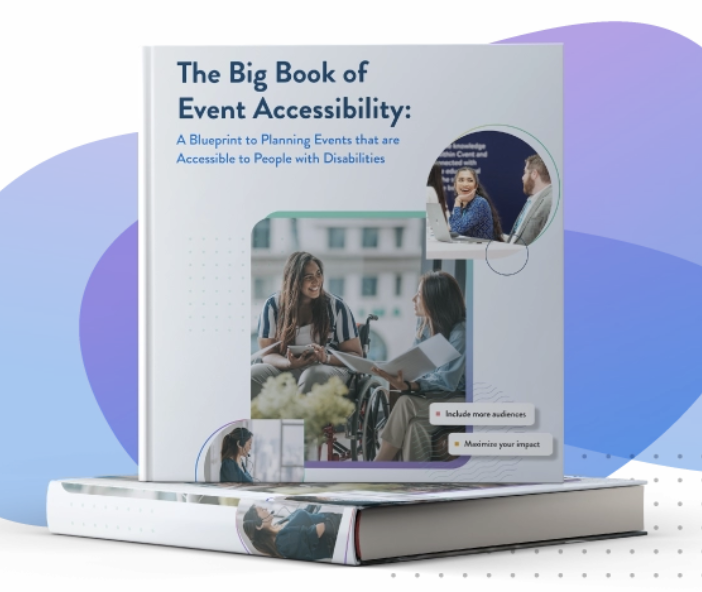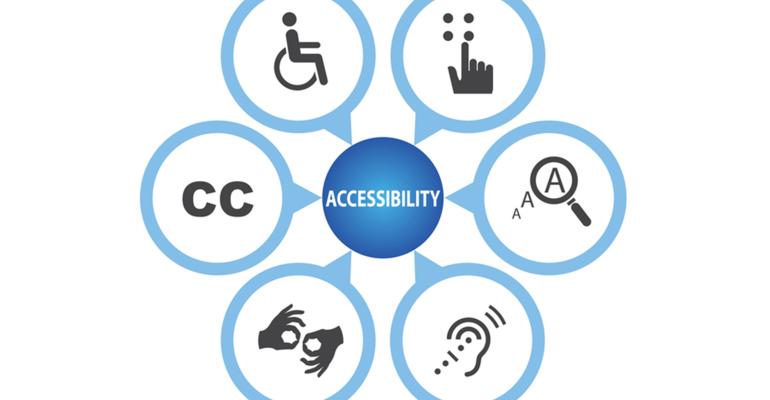Did you know that, on average, about one out of seven of your attendees at a given event has a disability of some type? With 35 million adults in America dealing with a disability, planners must engage attendees ahead of time to understand the limitations they have, and then account for those limitations as they plan the event experience.
That was the message from Stephen Cutchins, senior manager–accessibility at meeting-technology company Cvent. To get planners to better understand and plan for the challenges that some attendees face, he delivered a varied menu of advice in a recent MeetingsNet webinar.
 But the most important lesson, he said, is for planning teams to use a philosophy of “ask and act.” Encouraging attendees to present their challenges and needs during the registration process allows the planning team to act on what they learn, and then to communicate the actions they’ve taken to all attendees—some of whom might not have spoken up about their limitations.
But the most important lesson, he said, is for planning teams to use a philosophy of “ask and act.” Encouraging attendees to present their challenges and needs during the registration process allows the planning team to act on what they learn, and then to communicate the actions they’ve taken to all attendees—some of whom might not have spoken up about their limitations.
Other insights from Cutchins (in photo):
• Mobility issues are among the most common limitations for attendees. Designing registration areas, prefunction spaces, meeting rooms, food-and-beverage areas, and paths to and from buses and other transportation to be uncluttered and sufficiently flat for wheelchair users and others with limited mobility is critical. Also, planners must inform all hotels and outside venues about attendee limitations and ensure that the remedies are implemented.
• 11.3 percent of Americans have a cognitive disability or are neurodiverse. Among the things planners should consider: Simpler layouts on presentation slides—using bullet points and only a few colors, for instance—could help; flashing lights as a production element could cause a problem; the speaking pace of presenters and panelists should be deliberate; and quiet rooms with comfortable seating are important for attendees who need a break from the multisensory stimulation of the meeting.
• 7.8 percent of Americans have a hearing disability, while many others have at least some hearing difficulties. As a result, captioning tools, speech-to-text phone apps such as Microsoft Translator, sign-language interpreters, and other aids should be used.
• 5.5 percent of Americans have visual disabilities, and many more have visual difficulties—for example, eight percent of men are color-blind. This requires forethought about the design of presentation slides, badges, signage, plus other meeting elements.
One smart tactic that Cutchins suggested is for planners to coordinate site tours at the meeting venue and at hotels in the room block so that any attendee, with or without a disability, can become familiar with their environment before the event begins.
To hear all the advice Cutchins presented with accompanying slides during the 60-minute webinar, click here.
A Comprehensive Guide Now Available
 Just a week before the MeetingsNet webinar took place, Cvent used May 16—Global Accessibility Awareness Day—to unveil The Big Book of Event Accessibility. A year-long project spearheaded by Cutchins, the free e-book details all the ways planners must gather attendee information and then plan and promote the accessibility of both in-person and virtual events. Cutchins said during the webinar that he and his team are already considering a revised version of the e-book that would feature anecdotes and lessons from planners who have gotten good attendee feedback about their accessibility practices, as well as insights from frequent event attendees who have disabilities.
Just a week before the MeetingsNet webinar took place, Cvent used May 16—Global Accessibility Awareness Day—to unveil The Big Book of Event Accessibility. A year-long project spearheaded by Cutchins, the free e-book details all the ways planners must gather attendee information and then plan and promote the accessibility of both in-person and virtual events. Cutchins said during the webinar that he and his team are already considering a revised version of the e-book that would feature anecdotes and lessons from planners who have gotten good attendee feedback about their accessibility practices, as well as insights from frequent event attendees who have disabilities.





